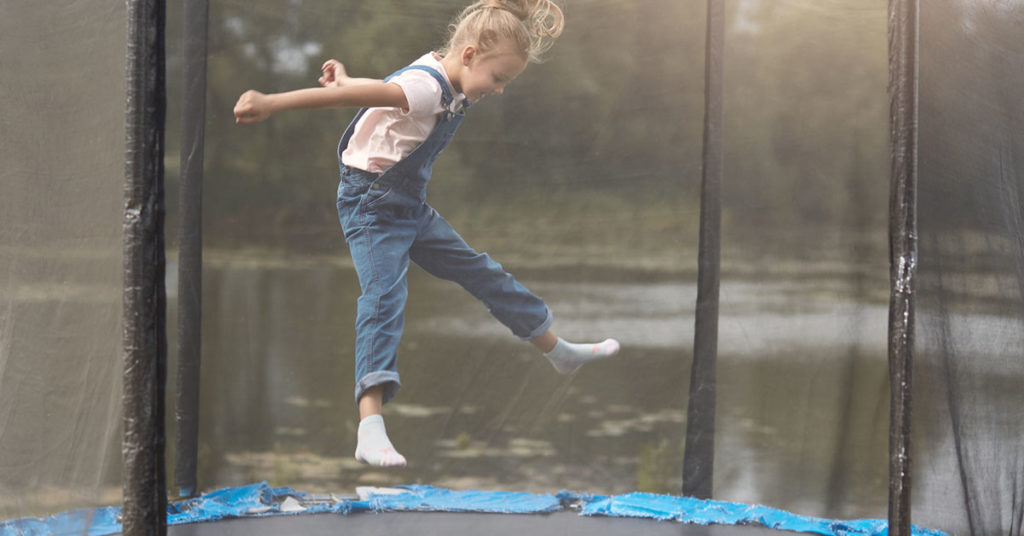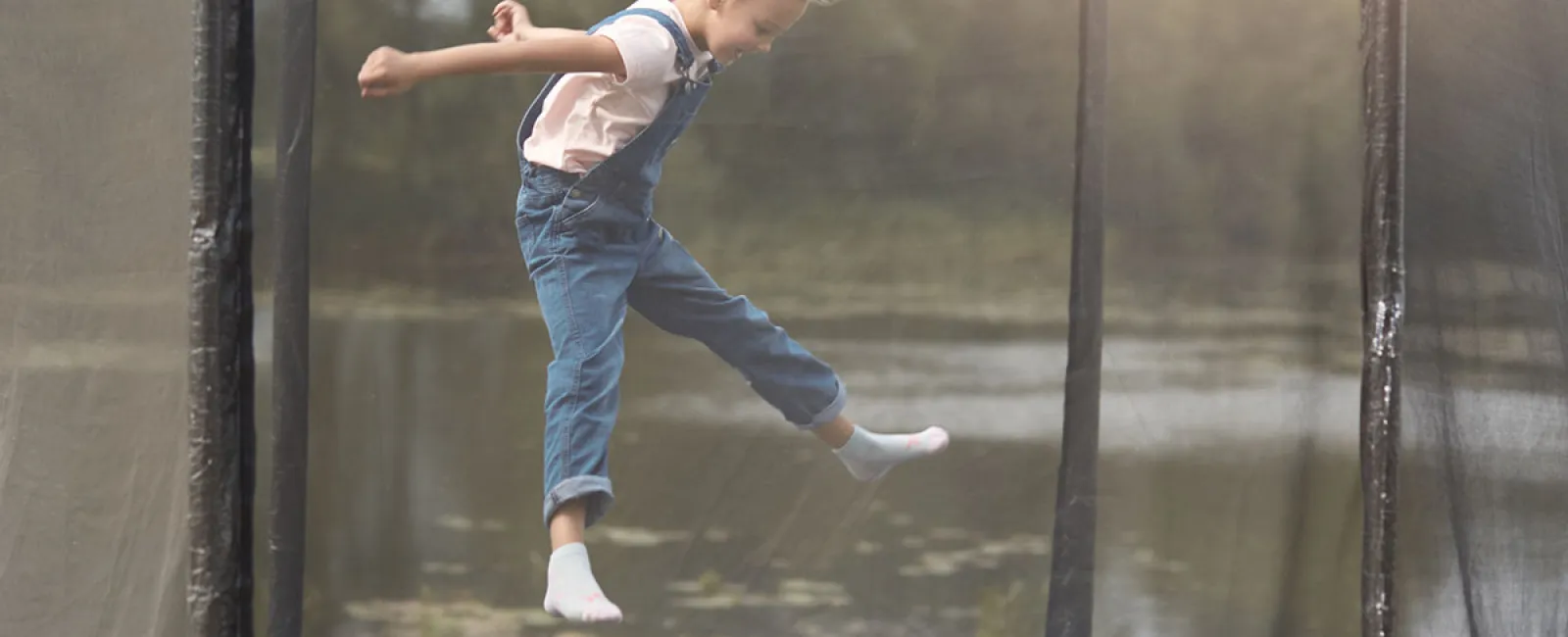
Trampolines are popular among children, teens and adults. However, they can also be dangerous, especially if you do not pay attention to trampoline safety. According to the US Consumer Product Safety Commission (via AAOS), around 300,000 trampoline injuries are medically treated each year in the US.
The most common causes of trampoline injuries are:
- Falling on the trampoline mat, frame, or springs
- Somersaults, flips, and other stunts that go wrong
- Falling off of the trampoline to the ground
While children and adults of all ages are at risk of getting hurt on a trampoline, the American Academy of Pediatrics (AAP) notes that children younger than 6 are at the greatest risk of a trampoline injury. According to the American Orthopaedic Society for Sports Medicine (AOSSM), the most common trampoline injuries involve sprains or fractures but more serious injuries to the head, neck, and spine are possible. To avoid these injuries, follow these trampoline safety tips.
1. Use Pads and Safety Nets
Your trampoline should come with safety pads that cover the frame, hooks, and springs. Choose a trampoline that has pads that are a contrasting color to the trampoline mat so that children can clearly see where it is safe to jump.
You should also use a net for trampoline safety. These nets can prevent falls from the trampoline. However, you can’t rely on a net to prevent injuries because many injuries occur on the mat of the trampoline. You still need to supervise kids when you have a safety net.
2. Only Allow One Jumper At A Time
It may seem like fun to have multiple people jumping on the trampoline, but according to the AOSSM, ¾ of injuries occur when two or more children are using the trampoline at the same time. That’s why one of the biggest trampoline safety tips is to have kids take individual turns on the trampoline. If you have more than one child that wants to use the trampoline, you can set a timer and have them rotate.
3. Always Supervise Kids
Never let children jump on the trampoline without adult supervision. More injuries occur when adults are not present. One of the reasons you need to supervise kids for trampoline safety is so you can be there to enforce safety rules.
4. Make Rules
You need to have a list of rules for what kids can and can’t do while on the trampolines. For example, it’s recommended that you limit high-risk moves like flips or somersaults. AOSSM reports that flips and somersaults are the leading cause of cervical spine injury among children using a trampoline. These types of manoeuvers should only be allowed with proper supervision and training.
5. Use The Ladder
Always use the ladder provided by the trampoline manufacturer to get on and off of the trampoline. Kids may think it’s fun to jump on and off the trampoline, but this can lead to injuries such as bruises and broken bones. It may even lead to more serious neck and head injuries.
After everyone is done using the trampoline, remove the ladder so that younger kids can’t get back on when you are not present.
6. Choose A Safe Place To Put The Trampoline
Trampolines should be set up in an open space on level ground. Trampolines should also be set up as low to the ground as is safe as falling from higher heights is more dangerous. Also, avoid putting the trampoline in a space where there are trees or other hazards nearby that might hit kids or catch their clothing when jumping.
7. Inspect The Trampoline Regularly
Before you or anyone else jumps on the trampoline, check the trampoline’s surface to make sure it is clear. Check that the springs are covered by the protective padding before jumping. You should also regularly check for rips, tears, detachments, and damage.
The team at South Shore Orthopedics has expertise in a wide range of orthopedic subspecialties, including fracture care, sports injuries, and joint replacement. If you have concerns about fractures, sprains, strains, or other orthopedic injuries, call our office at (781) 337-5555 to make an appointment.
During the COVID-19 pandemic, SSO’s priority is keeping our patients and staff healthy and safe. Our office continues to operate on a daily basis Monday – Friday from 8 am – 4 pm and we have implemented CDC recommended procedures regarding temperature checks, social distancing, and face coverings. We have been focusing on seeing urgent or emergent cases in-office but have telehealth appointments for non-emergent cases. Click here to read our latest coronavirus update in its entirety.
